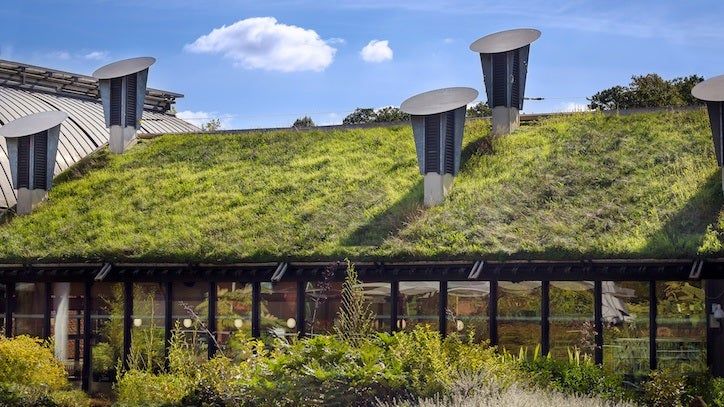Green roofing solutions” width=”724″ height=”407″>
In recent years, the importance of adopting eco-friendly practices has gained significant attention in various industries. The field of construction and building design is no exception, with an increasing emphasis on sustainable roofing solutions. One such solution that has gained popularity is green roofing. Green roofing offers numerous benefits, both for the environment and the building itself. Let’s explore this innovative and eco-friendly solution in greater detail.
The Concept of Green Roofing
Green roofing, also known as living roofs or vegetative roofs, involves the installation of a layer of vegetation on the roof of a building. This vegetation layer can consist of various plants, including grasses, flowers, succulents, and even small trees. Green roofing systems can be installed on various types of buildings, from residential homes to commercial and industrial structures. These green roofs can be either extensive or intensive, depending on the depth of the planting medium and types of plants used.
Environmental Benefits
Green roofing solutions offer several environmental benefits that contribute to a sustainable future. Firstly, they help mitigate the urban heat island effect. By absorbing solar radiation, green roofs reduce the surface temperature of buildings and the surrounding environment. This helps to cool urban areas, especially in warmer climates, reducing the reliance on air conditioning systems and lowering energy consumption.
Secondly, green roofs contribute to improved air quality. Plants naturally filter pollutants and carbon dioxide from the air, thus reducing greenhouse gas emissions and the impact of air pollution. Additionally, the vegetation on green roofs helps to capture and retain rainwater, reducing the strain on stormwater drainage systems and preventing runoff of contaminated water into nearby water bodies.
Energy Efficiency
One of the most significant advantages of green roofing solutions is their energy-saving potential. The layer of vegetation acts as an additional insulating barrier, reducing heat loss in winter and heat gain in summer, ultimately reducing the building’s energy consumption. This extra insulation can lead to substantial savings on heating and cooling costs, making green roofing an economically viable option in the long run.
Improving Biodiversity
Green roofing also presents an opportunity to increase urban biodiversity. By providing habitats for birds, insects, and other small animals, green roofs contribute to the preservation and promotion of local biodiversity. The added green space can compensate for the loss of natural habitats in urban environments, creating a more harmonious connection between humans and nature.
Aesthetic Appeal
Besides the environmental benefits, green roofing solutions enhance the aesthetic appeal of buildings. The lush greenery on rooftops adds a touch of natural beauty to often plain and monotonous urban landscapes. In dense urban areas, green roofs can create rooftop gardens or recreational areas, providing residents with additional green spaces and places to relax.
Challenges and Considerations
While green roofing solutions offer numerous advantages, it is essential to consider some challenges associated with their implementation. Considerations include the structural integrity of the building, proper waterproofing to prevent leaks, regular maintenance to ensure plant health, and the initial upfront costs associated with installation. However, with proper planning, these challenges can be effectively addressed, leading to a successful and sustainable green roof system.
Conclusion
Green roofing solutions have proven to be an innovative and eco-friendly option for buildings of all types. The environmental benefits, energy efficiency advantages, enhanced biodiversity, and visual appeal make green roofs an attractive choice for sustainable construction. As awareness surrounding the importance of eco-friendly practices grows, the adoption of green roofing solutions is likely to increase, contributing to a greener and more sustainable future.


